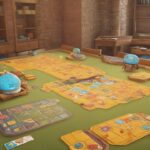Round Rock Journal – Early learners thrive when they can touch, feel, and explore their environment. Hands-on activities provide an engaging way for children to connect with knowledge beyond theory. Unlike passive listening, these activities stimulate multiple senses, creating stronger memory retention. For example, when a child builds with blocks, they aren’t just playing—they are exploring concepts of balance, shapes, and problem-solving. By blending fun with education, hands-on learning ensures that knowledge is not only understood but also internalized in meaningful ways.
“Also read: Top Street Food Around the World You Must Try“
The Concept of Light Education
Light education emphasizes simple, accessible, and joyful approaches to learning. Instead of overwhelming children with rigid structures, it encourages curiosity and discovery through playful methods. In this context, hands-on activities serve as the foundation. They offer children opportunities to learn naturally, without the pressure of formal instruction. Light education respects the rhythm of early learners, letting them absorb knowledge at their own pace while fostering creativity and confidence.
Building Motor Skills Through Interaction
Fine motor skills are crucial for young children as they prepare for writing, drawing, and other tasks. Hands-on activities like cutting paper, stacking blocks, or molding clay refine these abilities. Beyond physical coordination, these exercises help children gain control over their movements, which translates to greater independence in daily life. The act of manipulating objects also strengthens hand-eye coordination, giving learners a solid foundation for academic and practical tasks later in life.
Encouraging Critical Thinking and Problem-Solving
When children engage in hands-on activities, they encounter challenges that spark problem-solving. For instance, a puzzle forces them to think critically about shapes, sizes, and strategies. Trial and error teaches resilience, while success boosts confidence. These activities build logical thinking without forcing formal lessons. By allowing mistakes to become learning moments, early learners develop a growth mindset—an essential skill for lifelong learning. Hands-on education gently introduces these concepts in a fun, stress-free way.
Boosting Creativity and Imagination
Hands-on learning provides endless opportunities for creative expression. Activities like painting, crafting, or building allow children to turn imagination into reality. Unlike worksheets or rote memorization, these tasks have no single “correct” answer. This freedom encourages learners to explore possibilities and innovate. When children see their ideas come to life, it nurtures a sense of accomplishment and sparks curiosity. Creativity flourishes best when learners are given tools, space, and encouragement to experiment freely.
“Read more: Smart Wallpaper with Embedded Displays“
Enhancing Social and Emotional Growth
Many hands-on activities are designed for group participation, which helps children develop social skills. Sharing tools, taking turns, and working together build empathy and communication. At the same time, completing tasks successfully fosters self-esteem and emotional resilience. When conflicts arise, learners practice negotiation and problem resolution. These experiences prepare children for future collaboration in school and beyond. Emotional growth through interactive activities ensures they develop not just intellectually, but also as balanced individuals.
Practical Applications in Everyday Learning
Light education with hands-on activities doesn’t require expensive materials. Simple household items—cups, spoons, cardboard, or fabrics—can transform into powerful learning tools. Cooking with parents, gardening in the backyard, or sorting laundry by color can all become lessons. These daily experiences ground learning in real-life contexts, making education accessible and relatable. Parents and educators can create endless opportunities by integrating practical tasks into routines. The key lies in seeing every activity as a chance to explore and grow.


